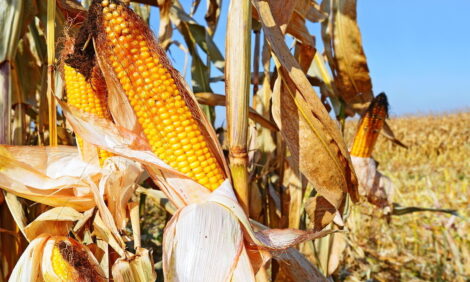



Brazilian Rainforest Caught Between Biodiversity and Business
Brazil is exporting more and more agricultural produce: soya beans and beef in particular, but also corn, rice and sugar. Taken together, these exports represent half of Brazil’s total today, writes Gaëlle Courcoux from the Institut de Recherche pour le Développement (IRD).
The increase in the export of commodities brings both a higher degree of economic dependency and a threat to the Amazon rainforest, as outlined by an IRD geographer and his Brazilian counterparts. THe studies were carried out with the Laboratory for Land Management (LAGET) of the Federal University of Rio de Janeiro and the National Institute of Land Studies (INPE) as part of the Amazonian Environmental Modeling Network GEOMA.
Agricultural produce is actually the cause of almost all deforestation in Brazil, where 750,000 km² of forest have disappeared — and 90% of that was converted into grazing land for cattle.
Recently, the increase of single-crop farming, especially of soya beans, has pushed herds further and further into forested areas, and so accelerated the process of deforestation.
These studies demonstrate the dangers of economic growth that depends on exporting agricultural produce, which may be appealing but is not sustainable.
For the past several years in Brazil, the export of agricultural produce has grown ceaselessly.
Soya beans, beef and sugar today constitute more than half of Brazil’s foreign trade. From the 1990s until just recently, such produce fluctuated around 40% of Brazilian exports. But between 2007 and 2010, their share jumped sharply and reached half the total amount, ahead of value-added manufactured goods such as cars, machinery and capital goods.
Growth at Any Price
The global economic downturn of 2008, the increase in the value of the Brazilian real (the local currency) against the dollar, as well as competition from China all meant that manufactured goods with a large or even moderate technological content became less competitive in world markets.
On the other hand, strong demand for foodstuffs and Brazil’s natural advantage in the sector served to increase the country’s export of agricultural produce.
Brazil remains an industrialised country, but has in the short space of four years, gone back to being principally a producer and exporter of agricultural produce.
An economy is deemed to be in the ‘primary sector’ when exports of raw materials and agricultural products make up the lion’s share of its exports.
While this may be the fastest way to boost national income, pushing a national economy into the primary sector actually reduces the potential for economic development. For one thing, it makes Brazil more exposed to volatility in commodity prices.
It can also bring about trade deficit in manufactured goods and harm the country’s industrial sector.
It also puts a damper on the number of highly-qualified jobs created and on social progress.
Grazing Harms Forests
This rise in primary exports also has a negative effect from an environmental point of view. As the work of the IRD geographer and his Brazilian counterparts shows, the increase in agricultural exports poses problems for the preservation of the Amazon rainforest: the expansion of agriculture is the main reason for deforestation.
Of about 3 million km² of forest in Brazil, already 750,000 km², have been lost to agriculture — and 80% of that has been given over to cattle grazing, which uses a lot of land.
Brazil has the biggest commercial herd of cattle on the planet and is the number one global exporter of beef, chiefly to Europe and China.
Three quarters of this agricultural land consists of fazendas, which are huge ranches that belong to individual landowners.
These powerful businessmen place enormous pressure on government officials to secure more and more grazing land.
In so doing, they appropriate to themselves vast tracts of public land and sometimes resort to illegal methods.
The remainder of the deforestation comes from family farming, which is still growing as rural populations continue to increase. Hundreds of thousands of families, sometimes with government support, have already received parcels of forest to turn into farmland. The vast majority of these family farmers have also moved into raising cattle on a large scale.
The Growth of Agribusiness
More recently, there has been a domino effect of deforestation as single-crop farming of soya beans, rice and corn has grown to meet strong worldwide demand.
Soya bean cultivation tends mainly to take over grazing land and thus moves herds closer to the forest. Brazil has become the world’s second-largest exporter of soya beans, which, like corn, is mainly intended as animal feed in Europe and China.
It is cheaper to expand agricultural production of these types of crops through deforestation than through intensive farming and the farmers can also sell the wood from the trees they cut in the forest, which is a very valuable commodity.
The government increased controls from the year 2000 onwards to scale down deforestation from around 20,000 to just 6,000 km² per year, but the threat of an increase in world demand is always just over the horizon.
So these studies make clear just how dangerous it is to stake a country’s growth on agricultural exports, which aren’t sustainable and continually jeopardise the rainforest. The Brazilian government took note and committed to reduce its greenhouse gases, most of which come from deforestation.
Only Europe, the USA, Canada, Japan, New Zealand, Russia and Australia are bound to reduce their emissions under the Kyoto Protocol.
But the question remains whether ecological awareness and the desire for sustainable economic development can resist the pressure of global demand.
February 2012


